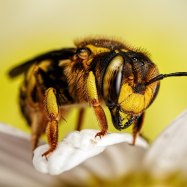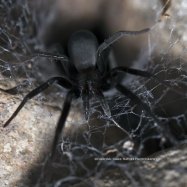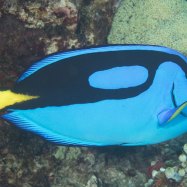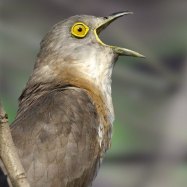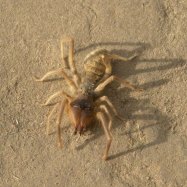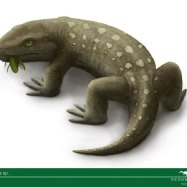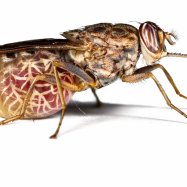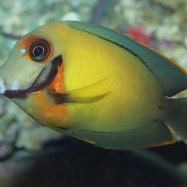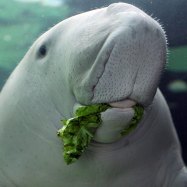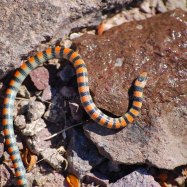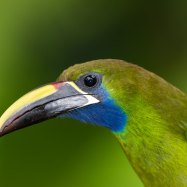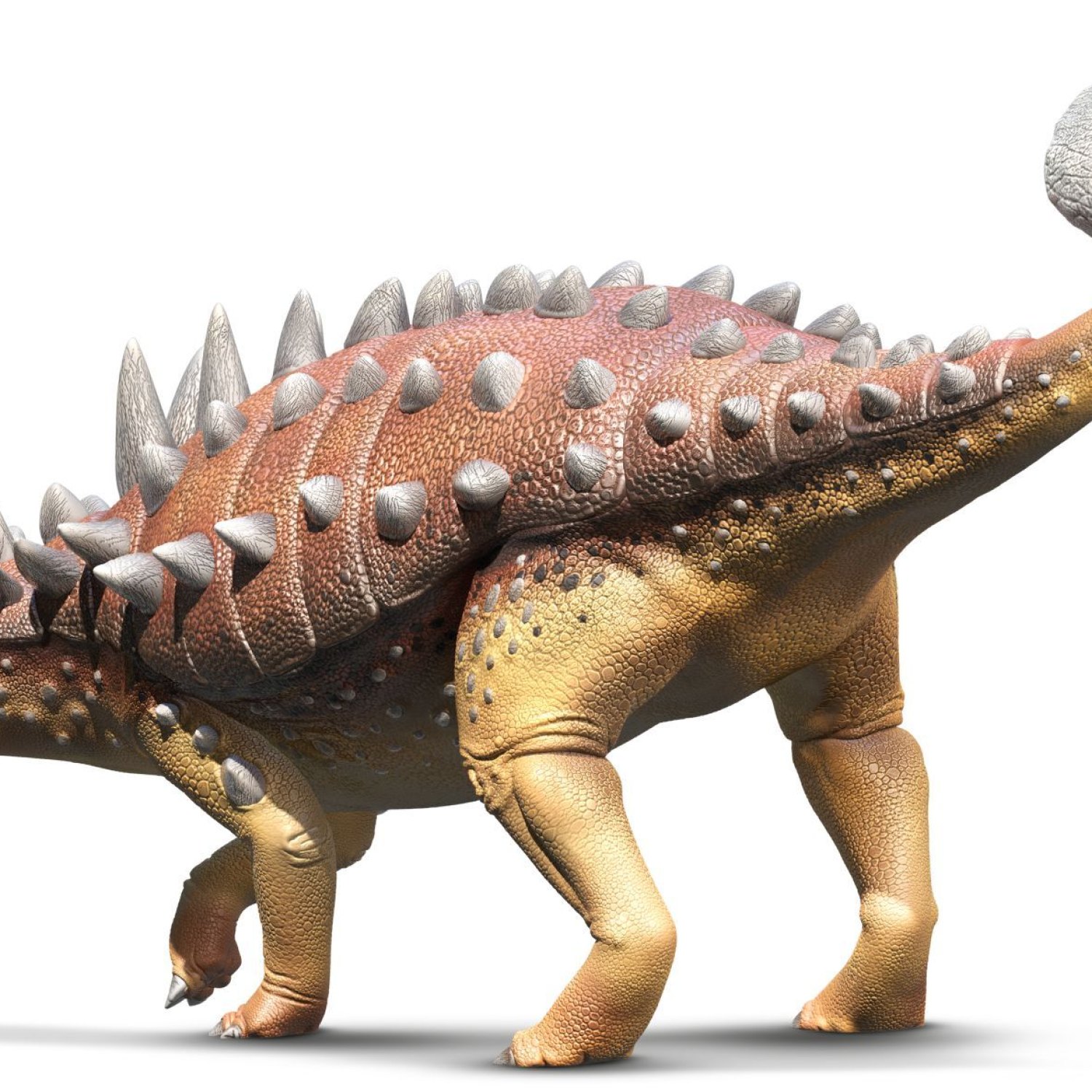
Euoplocephalus
6-8 meters (20-26 feet)
Meet Euoplocephalus, a massive dinosaur from the Ankylosauridae family. This herbivorous beast roamed Alberta and Wyoming millions of years ago, measuring 6-8 meters in length. Its distinct feature is its large, heavily built body that was covered in armor, making it a formidable creature in its prehistoric environment. #Euoplocephalus #Ankylosauridae #Alberta #Wyoming #dinosaur #prehistoricanimals
Animal Details Summary:
Common Name: Euoplocephalus
Kingdom: Animalia
Habitat: Terrestrial
The Mighty Euoplocephalus: An Ancient Armored Beast
In the vast world of prehistoric creatures, there were some that stood out for their sheer size, appearance, and ferocity. One such creature was the Euoplocephalus. This large and heavily built creature was a member of the Ankylosauridae family and inhabited what is now North America during the Late Cretaceous period, around 76 million years ago.The name Euoplocephalus translates to "well-armored head," and it is not difficult to see why Euoplocephalus. This massive dinosaur had a unique body armor that made it one of the most well-defended creatures of its time. Its thick, bony plates and spikes were like a medieval knight's armor, making it almost invulnerable to predators. Today, we know about Euoplocephalus mainly through fossils, but from what we have discovered, this ancient beast certainly had some impressive qualities.
Ancient Origins
Euoplocephalus was a member of the dinosaur order Ornithischia, which translates to "bird-hipped" due to their hip structure resembling that of birds. They were herbivorous, which means they primarily fed on plants, and were quite successful in that regard. Their geographical distribution was primarily in North America, with a concentration in Canada and parts of the United States. In fact, most fossils of Euoplocephalus have been discovered in the provinces of Alberta in Canada and Wyoming in the United States.The earliest fossil of Euoplocephalus was found in the Horseshoe Canyon Formation in Alberta and dates back around 73 million years ago. Since then, scientists have uncovered multiple fossils of this species, providing us with valuable information about its physical appearance and behavior Equatorial Spitting Cobra.
A Formidable Appearance
One of the most striking features of Euoplocephalus is its armor. Its body was entirely covered in dense bony plates called osteoderms, which formed a protective shield around its body. These osteoderms were heavily embedded in the skin and were arranged in rows along its back, sides, and tail. Each plate was about the size of a dinner plate and was connected to its neighboring plates by tough, flexible skin, allowing for movement while providing solid protection.In addition to the plates, Euoplocephalus also had numerous protruding spikes on its body. These spikes were primarily for defense and were found on its neck, shoulders, and hips. The large spikes on its shoulders could potentially be used as a battering ram against predators. Its head was also well-protected, with a thick and bony skull, giving rise to its name - "well-armored head."
The coloration of Euoplocephalus is still a topic of debate among scientists. Based on fossil evidence, it is believed that these creatures had a grayish-brown color with patches of lighter and darker shades. Some studies have suggested that they may have had colorful patterns on their body, much like modern-day lizards, but this remains unproven.
A Terrestrial Lifestyle
Being a member of the Ankylosauridae family, Euoplocephalus was a quadrupedal dinosaur, which means it walked on four legs. Its front legs were slightly shorter and thicker than its hind legs, giving it a unique gait. Its body shape was similar to that of a tank - large and heavily built. Although they were relatively slow-moving, these creatures had great agility and could defend themselves effectively against predators.Euoplocephalus was a terrestrial animal, which means it lived and moved primarily on land. Its heavy body and sturdy legs made it more suited to moving on land than in water or on trees. It is believed that they lived in large herds, moving together in search of food and water.
A Herbivorous Diet
Despite its intimidating appearance, Euoplocephalus was a herbivore - a plant-eating dinosaur. Its blunt, peg-like teeth were well-suited for chewing on tough vegetation. These dinosaurs were known to feed on cycads, conifers, and other low-lying plants that were abundant during the Late Cretaceous period. Their powerful jaws and teeth allowed them to break through even the thickest plant material, making them successful and efficient feeders.A Journey to the Present
In 1897, a group of fossil hunters, led by Lawrence Lambe, discovered the first-ever fossil of Euoplocephalus in Alberta, Canada. It was a partial skeleton, including parts of the head and the shoulders. This discovery sparked great interest and led to many more excavations, unearthing new specimens and adding to our knowledge about this mysterious creature.In the following decades, many more fossils have been found, including complete skeletons of Euoplocephalus. Remarkably, a near-complete skeleton of a juvenile Euoplocephalus was discovered in Canada in the 1990s. This discovery provided new insights into the physical development and growth patterns of this dinosaur.
Some of the most well-preserved fossils of Euoplocephalus have been found in the Two Medicine Formation in Montana and Dinosaur Provincial Park in Alberta. These fossils have allowed scientists to study the anatomy and behavior of this creature in greater detail, giving rise to some interesting theories and findings.
The Final Verdict
In today's world, Euoplocephalus may seem like a forgotten relic of the past, but it was a formidable creature in its time. Its heavily armored body made it almost indestructible, and its herbivorous diet ensured its survival for millions of years. The fossils discovered have provided us with invaluable information, making Euoplocephalus one of the most well-understood dinosaurs.Despite its imposing appearance, Euoplocephalus did not survive the mass extinction event that wiped out most dinosaurs around 66 million years ago. However, its legacy still lives on, reminding us of the incredible creatures that once roamed our planet. Today, we continue to unearth new fossils and learn more about Euoplocephalus and other ancient creatures, painting a clearer picture of what life was like during the Age of Dinosaurs.

Euoplocephalus
Animal Details Euoplocephalus - Scientific Name: Euoplocephalus
- Category: Animals E
- Scientific Name: Euoplocephalus
- Common Name: Euoplocephalus
- Kingdom: Animalia
- Phylum: Chordata
- Class: Reptilia
- Order: Ornithischia
- Family: Ankylosauridae
- Habitat: Terrestrial
- Feeding Method: Herbivorous
- Geographical Distribution: North America
- Country of Origin: Canada, United States
- Location: Alberta, Wyoming
- Animal Coloration: Grayish-brown with bony plates
- Body Shape: Large and heavily built
- Length: 6-8 meters (20-26 feet)
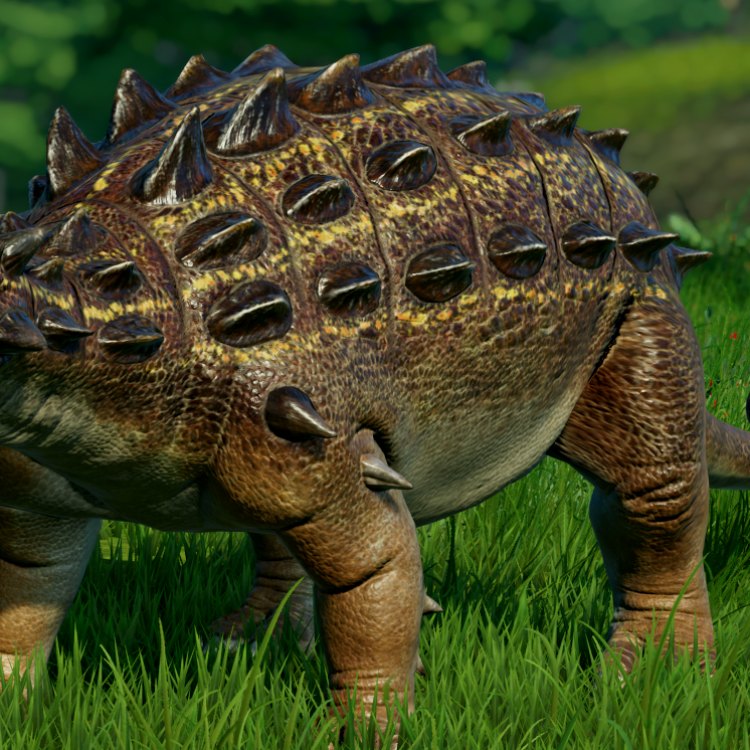
Euoplocephalus
- Adult Size: 6-8 meters (20-26 feet)
- Average Lifespan: Unknown
- Reproduction: Sexual
- Reproductive Behavior: Not well understood
- Sound or Call: Unknown
- Migration Pattern: Non-migratory
- Social Groups: Unknown
- Behavior: Defensive and slow-moving
- Threats: Predation, habitat loss
- Conservation Status: Extinct
- Impact on Ecosystem: Unknown
- Human Use: Fossil specimen for research
- Distinctive Features: Armored body with bony plates and spikes
- Interesting Facts: Euoplocephalus was a type of armored dinosaur that lived during the Late Cretaceous period. It had a heavily built body with a series of bony plates and spikes covering its back and sides. These plates provided protection against predators and were also used in displays during mating season. Euoplocephalus was a herbivorous dinosaur that fed on low-lying vegetation. It had a wide and flat beak-like mouth for cropping plants. Euoplocephalus is known from fossil remains found in North America, primarily in Alberta and Wyoming. It is estimated to have been about 6-8 meters (20-26 feet) in length. The exact lifespan of Euoplocephalus is unknown, but it is thought to have lived for several decades. The extinction of Euoplocephalus and other non-avian dinosaurs occurred at the end of the Cretaceous period, possibly due to a combination of environmental changes and the impact of a large asteroid or comet. Today, the fossil remains of Euoplocephalus are important for scientific research and help us understand the ancient ecosystems in which these dinosaurs lived.
- Predator: Unknown
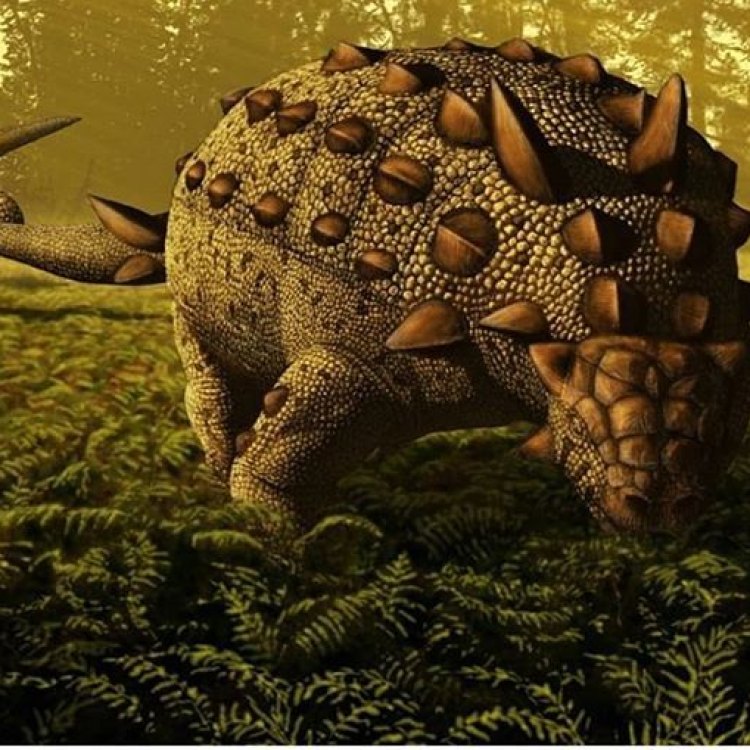
Euoplocephalus
Euoplocephalus: The Armored Dinosaur of the Late Cretaceous
As you would expect from its name, Euoplocephalus was not your average dinosaur. This fascinating creature lived during the Late Cretaceous period, around 76.5-75 million years ago, in what is now western North America. It was a heavily built herbivore with a unique protective feature that set it apart from other dinosaurs of its time - a series of bony plates and spikes covering its back and sides PeaceOfAnimals.Com.Standing at 6-8 meters (20-26 feet) in length, Euoplocephalus was a force to be reckoned with. Its name translates to "well-armored head," and it is clear to see why. This remarkable dinosaur had an armor consisting of small, bony plates, embedded in its skin that offered protection against the predators of its time. The thick, club-like spikes on its tail also played a vital role in defense, used to defend against any potential attacks.
Apart from its impressive armor, Euoplocephalus had a distinctive appearance. It had a wide and flat beak-like mouth for cropping plants, and its head was adorned with two pointed horns, one on the nose and one above each eye. Its tail was also equipped with two spikes, one on each hip. While this spiky exterior may seem intimidating, the Euoplocephalus was a peaceful herbivore that fed on low-lying vegetation.
Little is known about the social behavior of Euoplocephalus, as it is primarily known through fossil remains European Bee Eater. However, it is believed that they lived in small herds, as evidenced by the discovery of multiple individuals found in close proximity to one another. It is also speculated that they were slow-moving animals, as their heavily built body and armor may have hindered their movements. Much of their behavior remains a mystery, and scientists continue to study new fossil evidence to gain a better understanding.
The reproductive behavior of Euoplocephalus is also not well understood. It is known to have reproduced sexually, and some scientists speculate that they may have formed monogamous pairs during the breeding season. However, without any direct evidence, it is impossible to confirm this hypothesis.
One sound or call has been attributed to Euoplocephalus so far, and that is silence. As with many other dinosaur species, we do not have any evidence to suggest that they were capable of vocalization. But it is possible that they could have made low-frequency sounds that we are not able to hear.
Euoplocephalus was a non-migratory species, meaning they did not undertake long-distance seasonal migrations. However, they may have moved within their habitat in search of food and water. These dinosaurs were thought to have thrived in coastal wetlands, river plains, and swamp forests. The prehistoric landscapes where Euoplocephalus roamed were vastly different from what we see today, with evidence suggesting a warmer, more humid climate.
Unfortunately, the exact lifespan of Euoplocephalus is unknown, as the species is known only from fossils. However, based on the estimated lifespan of other similar dinosaurs, it is believed that Euoplocephalus may have lived for several decades.
Unfortunately, Euoplocephalus and all non-avian dinosaurs went extinct at the end of the Cretaceous period, around 66 million years ago. The exact cause of their extinction is still debated, but it is believed to be a combination of a rapidly changing environment and the impact of a massive asteroid or comet. This catastrophic event led to the extinction of over 75% of all species on Earth, and Euoplocephalus was one of them.
Today, the fossil remains of Euoplocephalus continue to fascinate scientists and the general public alike. These fossils provide a valuable window into the prehistoric world and help us gain a better understanding of the ecosystems in which these magnificent creatures lived. The discovery of multiple specimens in close proximity has also led researchers to believe that Euoplocephalus may have been a social species, providing insight into their behavior and interactions with each other.
The impact of Euoplocephalus on its ecosystem is unknown, as the Cretaceous period was a time of significant ecological change. However, it is believed that their herbivorous diet may have helped to shape the vegetation of their time and provided an important food source for predators.
While Euoplocephalus may be extinct, its legacy lives on through its fossil remains, which serve as a reminder of the incredible diversity that existed in prehistoric times. These fossils are treasured specimens that continue to be studied, and with each new discovery, we gain a glimpse into the mysterious world of the armored dinosaur, Euoplocephalus.
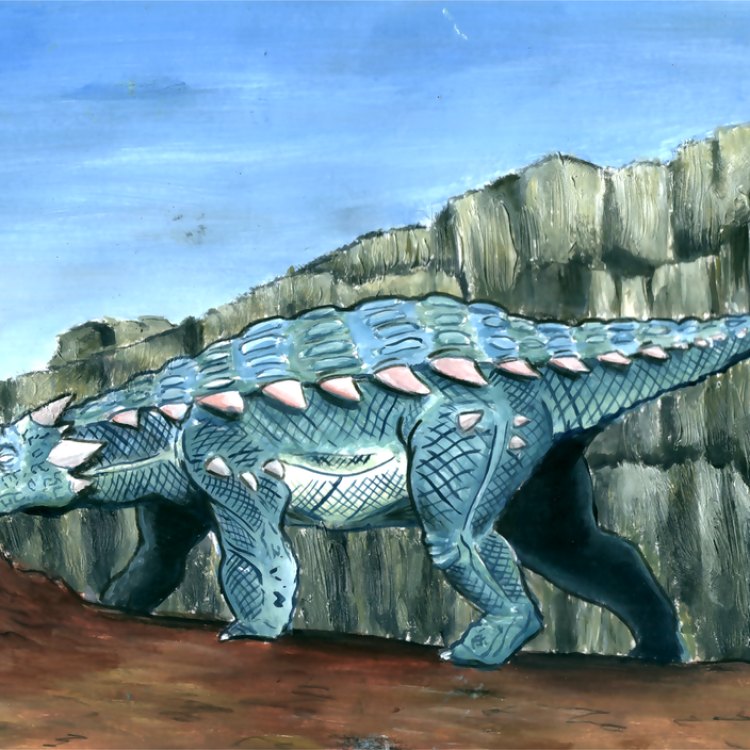
The Mighty Euoplocephalus: An Ancient Armored Beast
Disclaimer: The content provided is for informational purposes only. We cannot guarantee the accuracy of the information on this page 100%. All information provided here may change without prior notice.

